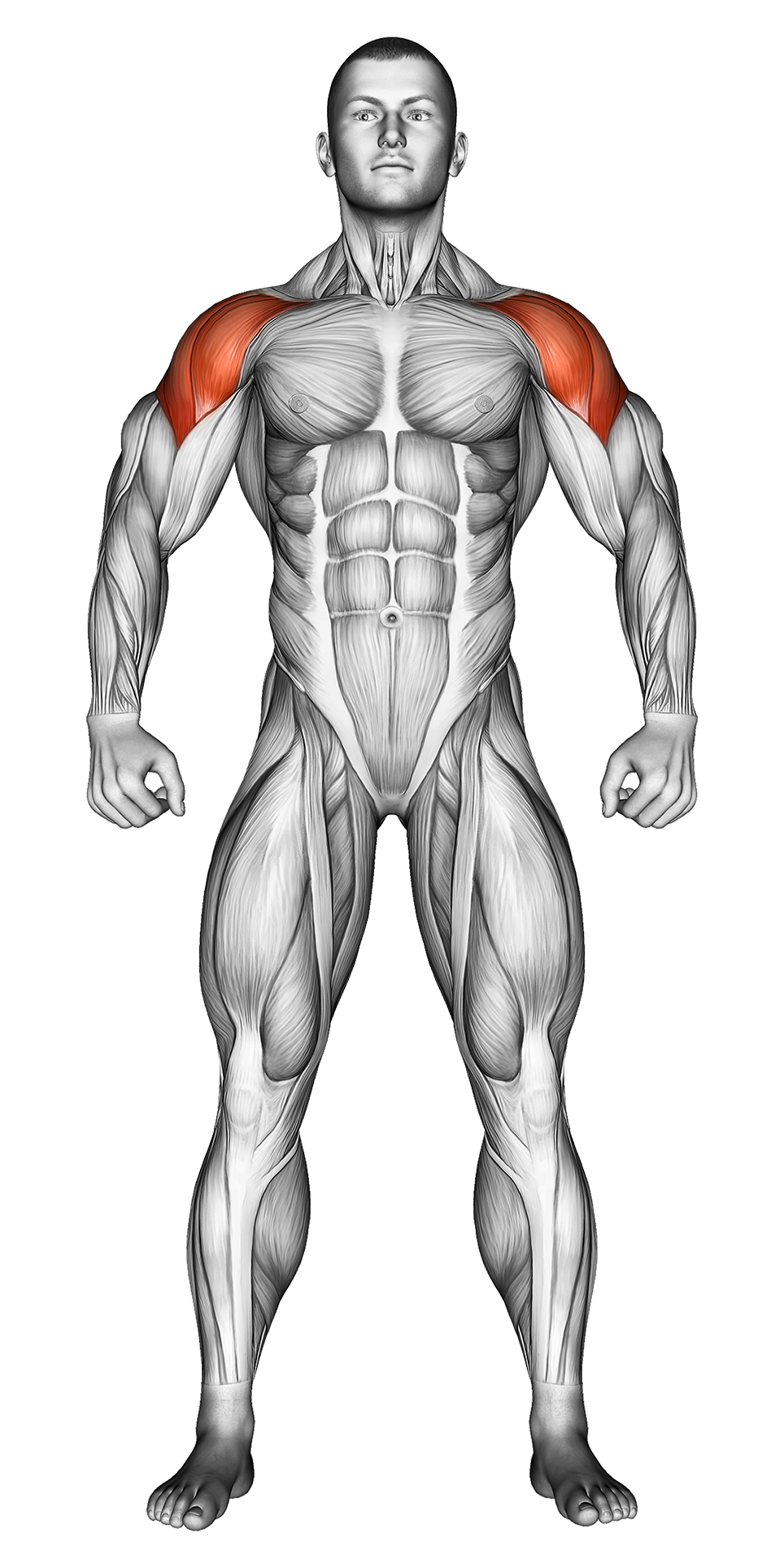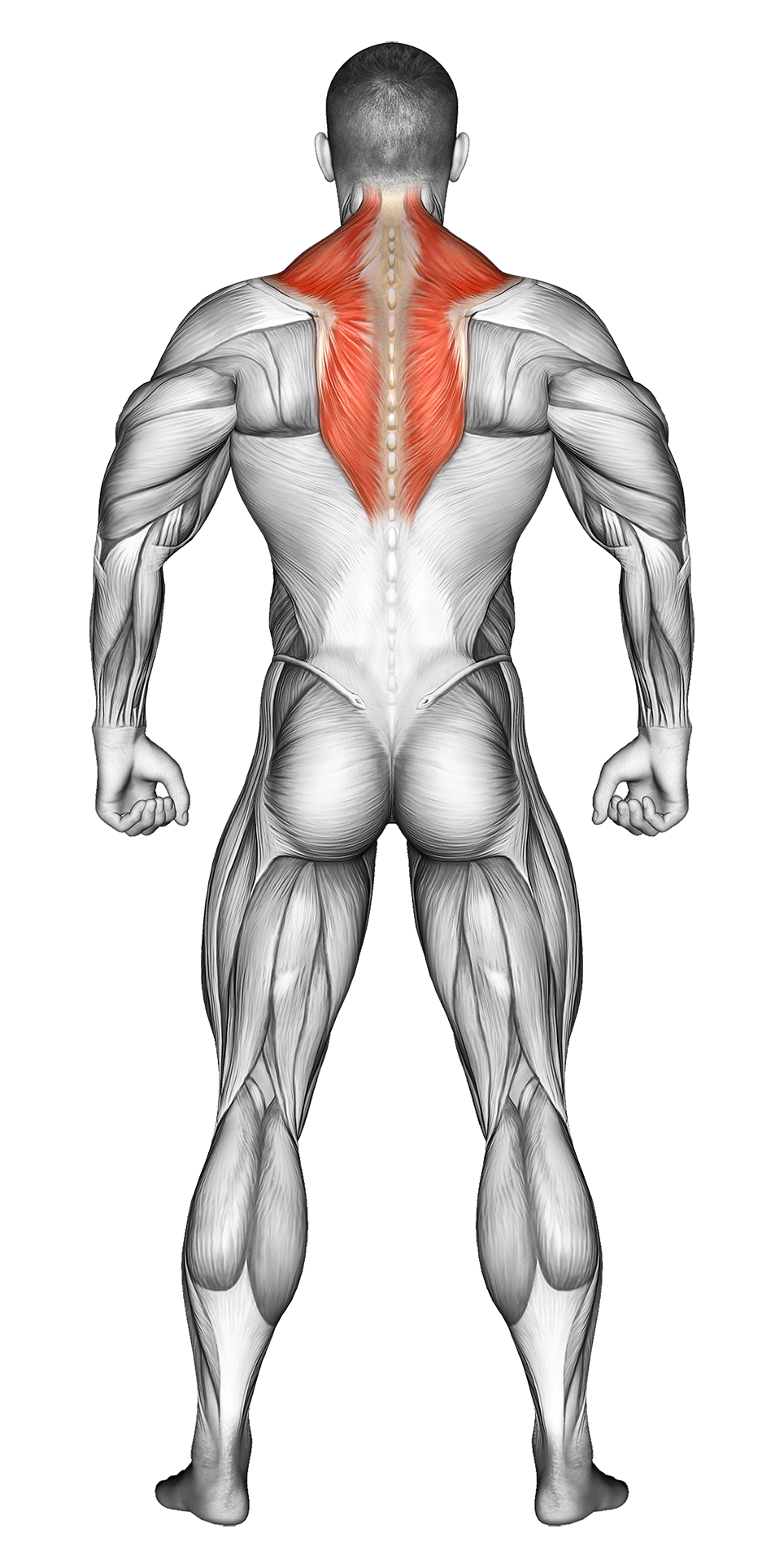Standing Cable Reverse Fly: Video Tutorial & Exercise Guide
| Workout | Standing Cable Reverse Fly |
| Primary Muscle Group | Shoulders |
| Secondary Muscle Group | Traps |
| Equipment Required | Cable |
| Force Type | Pull |
| Mechanics | Isolation |
| Exercise Type | Strength |
| Difficulty | Intermediate |
Standing Cable Reverse Fly: Video Tutorial & Exercise Guide
Muscle Groups
- Primary Muscle Group- Secondary Muscle Group
Standing Cable Reverse Fly - Step-by-Step Guide
Standing Cable Reverse Fly Overview
Benefits of Standing Cable Reverse Fly
Standing Cable Reverse Fly Pro Tips & Advanced Techniques
Progression Plan for Standing Cable Reverse Fly
Frequently Asked Questions (FAQs) Of Standing Cable Reverse Fly
Secondary Muscles
How to do Standing Cable Reverse Fly – Step-by-Step Guide
- Step 1: Set the pulleys of a cable machine to the highest setting, and attach single handles to each side. Stand in the middle of the machine with your feet shoulder-width apart.
- Step 2: Grab the left handle with your right hand and the right handle with your left hand, crossing the cables in front of your body. Stand upright with a slight bend in your knees, and extend your arms in front of you at shoulder height.
- Step 3: Engage your core and keep your chest up. Begin the movement by pulling your arms out to your sides in a wide arc, focusing on squeezing your shoulder blades together.
- Step 4: Continue pulling until your arms are fully extended out to your sides, keeping a slight bend in your elbows. Your arms should be in line with your shoulders at the peak of the movement.
- Step 5: Slowly return to the starting position with control, maintaining tension in the cables. Repeat for the desired number of reps.
Standing Cable Reverse Fly Overview
The standing cable reverse fly is an excellent isolation exercise for targeting the rear deltoids (back of the shoulders) and upper back muscles, including the rhomboids and traps. The cables provide constant tension throughout the movement, allowing for better muscle engagement compared to free weights.
This exercise is great for improving shoulder stability, enhancing posture, and developing balanced shoulder muscles. It is a safe and effective option for those looking to strengthen their upper back and rear delts while reducing the risk of shoulder injuries.
Benefits of Standing Cable Reverse Fly
The standing cable reverse fly primarily targets the rear deltoids, helping to create balanced shoulder development. It also engages the rhomboids and trapezius muscles, which contribute to better posture and shoulder stability.
This exercise strengthens the muscles that retract and stabilize the shoulder blades, which is important for improving posture, especially for individuals who spend a lot of time sitting or have rounded shoulders.
The cables provide consistent tension throughout the movement, making it easier to maintain proper form and muscle engagement. This ensures the rear delts are effectively targeted without relying on momentum.
Standing Cable Reverse Fly: Pro Tips & Advanced Techniques
Focus on squeezing your shoulder blades together at the peak of the movement to fully engage your rear delts and upper back. Keep your movements slow and controlled, especially during the lowering phase, to maximize muscle activation. For an added challenge, try pausing at the top for 1-2 seconds or using a lighter weight with higher reps to fatigue the muscles. Ready to build stronger rear delts? Let’s fly!
Progression Plan for Standing Cable Reverse Fly
| Level | Sets | Reps | Progression Tips |
|---|---|---|---|
| Beginner | 2-3 | 10-12 | Start with a light weight to focus on proper form. Ensure your core remains engaged and your shoulders stay down throughout the movement. |
| Intermediate | 3-4 | 12-15 | Increase the weight gradually while maintaining control. Focus on squeezing your shoulder blades together at the top of each rep for maximum muscle activation. |
| Advanced | 4-5 | 15-20 | Use heavier weights and slow down the lowering phase to increase time under tension. You can also perform dropsets or superset with other rear delt exercises for added intensity. |
Frequently Asked Questions (FAQs) of Standing Cable Reverse Fly
What muscles do Standing Cable Reverse Flys target?
This exercise primarily targets the rear deltoids, with secondary engagement of the rhomboids, trapezius, and upper back muscles.
Are Standing Cable Reverse Flys suitable for beginners?
Yes, standing cable reverse flys are suitable for beginners. Start with lighter weights to master proper form and gradually increase the resistance as your strength improves.
How can I make Standing Cable Reverse Flys more challenging?
To increase the difficulty, use heavier weights, slow down the lowering phase, or add pauses at the peak of the movement. You can also try performing the exercise with higher reps for a burnout set.
How often should I include Standing Cable Reverse Flys in my routine?
Standing cable reverse flys can be included 1-2 times per week as part of your upper body or shoulder workout. They pair well with other shoulder and back exercises like face pulls or lateral raises for a balanced routine.
What common mistakes should I avoid when doing Standing Cable Reverse Flys?
Avoid using momentum to pull the cables and shrugging your shoulders during the movement. Focus on slow, controlled reps, and keep your shoulders down to engage the correct muscles.
Share

